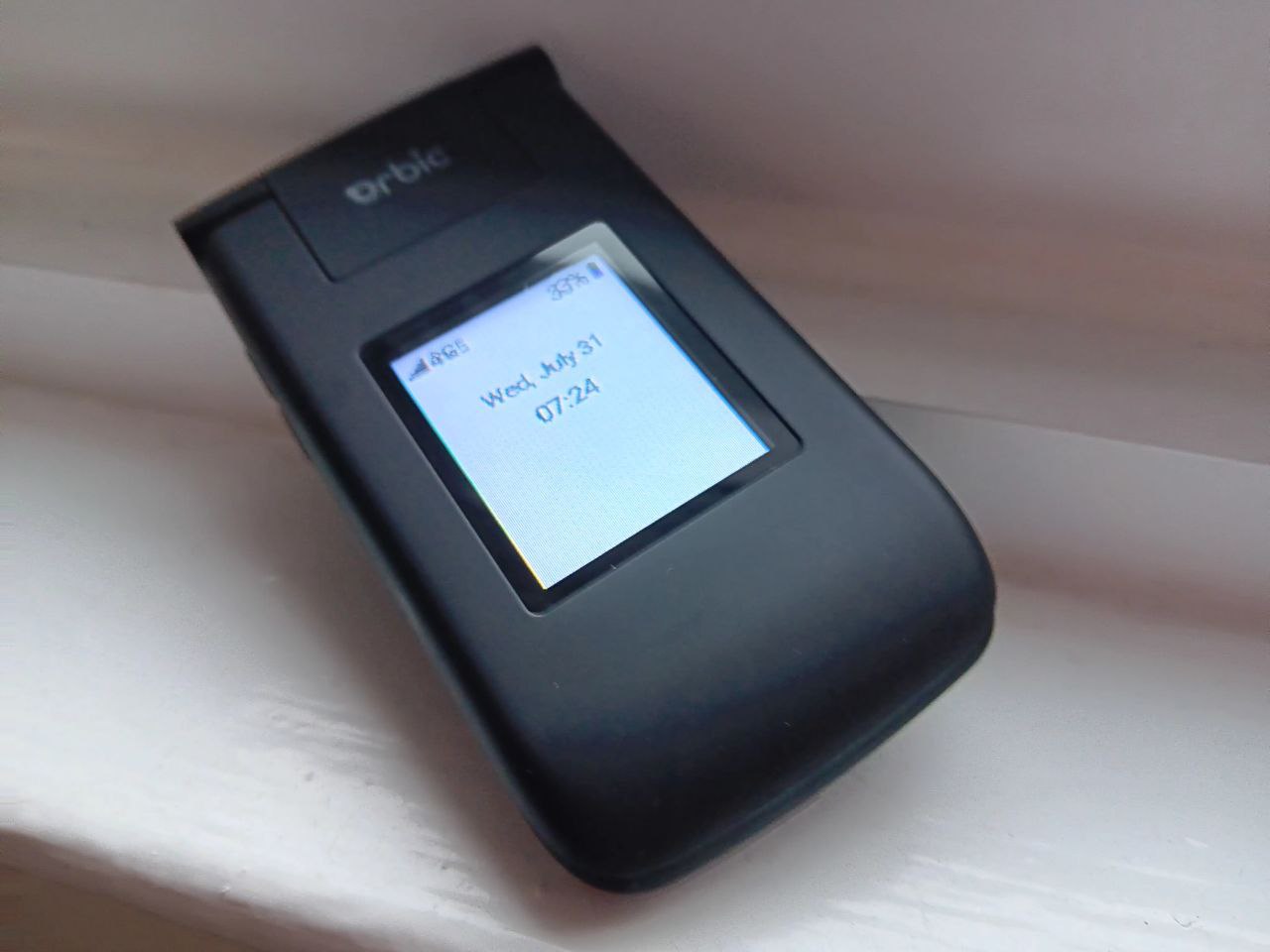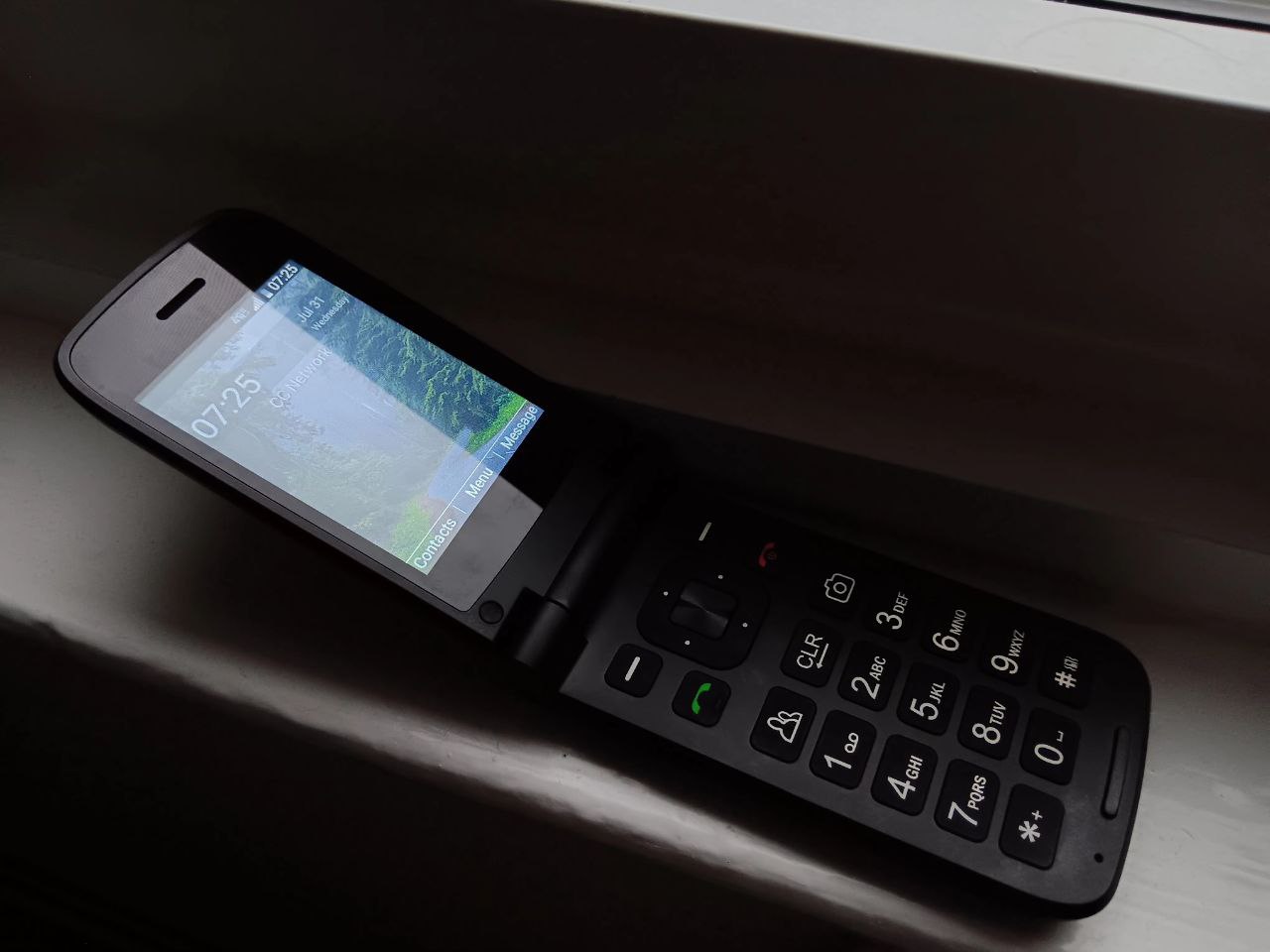I've spent more-or-less two months with an Orbic Journey V feature phone, my first time daily driving locked down AOSP (Android Open Source Project, AKA, "raw" Android) on a feature phone, and I've come to the conclusion that it is serviceable at best.
Compared to the competition, I'd say AOSP is almost the worst of the major feature phone operating systems, mainly due to the amount of variance between manufacturers and lack of quality control. Below is a comparison, based solely on my experience, of AOSP vs KaiOS and modern RTOS-es (such as ThreadX or Mocor).
In my experience, AOSP may be the worst of the options for feature phone use, particularly if you don't care about instant messaging/VoIP, maps, music streaming, or anything "smart."

With the rant about AOSP out of the way, I suppose it's time to talk about the Orbic Journey V. The cell phone in question is a US-market feature phone released exclusively on the Verizon Wireless network, with variants released for some LTEiRA (LTE in Rural America-- regional mobile networks which operate LTE service in rural areas in partnership with Verizon [including operating on LTE band 13]) networks and MVNOs operating on Verizon. The Journey V is identical to the Journey R (variant for LTEiRA networks and MVNOs such as Xfinity/Comcast), and mostly identical to the Journey L ("Kosher-ish" variant with mobile web and most data services disabled). The Orbic Journey V is very basic, even for a feature phone running AOSP, to the extent that it reminds me of cheap CDMA devices from a decade or two ago (fittingly, it does support CDMA).
If the spec list wasn't enough of an indicator, this thing is barebones. The software and network compatibility show for that, too.
This device will likely not function outside of North America and Latin America, and even within the USA, it won't function particularly well on carriers other than Verizon and associated MVNOs (the unit I possess came from TracFone, an MVNO owned by Verizon). It may function on T-Mobile and T-Mobile MVNOs in urban areas, but the lack of band 12 impairs reception inside buildings, and the lack of band 71 impairs reception in rural areas. This device also won't activate on AT&T and AT&T MVNOs that are implementing whitelist restrictions. I've been using it on Consumer Cellular (a postpaid AT&T MVNO), which doesn't implement whitelist restrictions. Urban, suburban, and rural coverage in the Northeastern USA with AT&T has been more than adequate, even in the absence of band 12; however, AT&T may force the hand of any MVNO not enforcing the whitelist into submission, so a non-whitelisting AT&T MVNO wouldn't be a good choice for this device, either. Functionally, Verizon has made a device only ideally used on Verizon.
Additionally, it is extremely hard (if not impossible) to key in additional APN configurations, making accessing MMS and data services on some networks/MVNOs impossible or impaired in some cases.

Compared to devices from manufacturers such as TCL and LG, the build quality on the Orbic is a letdown. The hinge doesn't feel robust, the chassis is flocked (rubberized coated plastic), both displays are low-quality TFT (I can see dithering of colors on the interior display) with poor viewing angles, but the keypad feels decent. The charging port is MicroUSB, but that shouldn't be particularly shocking.
The camera is about on-par with feature phones from a decade or two ago. No video recording capabilities, no digital zoom, just point and shoot.
The software, a heavily skinned version of Android/AOSP 8.0, is extremely barebones. As far as I can tell, access to ADB (Android Debug Bridge) and APK installations are disabled, making it impossible to add or remove software from the device.
The OS lacks the ability to actually kill applications running in memory (in the background), which I think is a factor in the battery life being so poor. I struggle to get 3 days out of a charge on it, even with the phone in standby as much as possible (standby with data and WiFi disabled). Additionally, the thermal performance is underwhelming at best, heating up whenever data services or WiFi are in use.
The software has many basic functions, such as a world clock, timer, MP3 player, and tip calculator. Nothing new, all of these features (save for MP3 playback) have been present on virtually every feature phone released in the USA since 2003 or so.
Mobile web is borderline unusable. Text-based sites will load without issue, but graphically intensive sites and rich media (streaming video, interactive maps, etc.) will cause the device to hang and freeze. If you must get online with this device, tethering to a device such as a laptop or tablet computer (if supported by your mobile plan) is a much better option.
Call quality is decent, though background noises (such as wind, traffic, or people talking in the background) isn't blocked out at all. Earpiece and speakerphone sound quality on the receiving end is perfectly fine. Calls were tested on Verizon and AT&T, both over LTE.
The SMS/MMS experience is adequate: T9 is supported, but I instead use standard multitap input. MMS sending and recieving is about as timely as on any other cell phone.
The Orbic Journey V is an extremely basic feature phone for the American market, with lackluster battery life, build quality, and software. I'd recommend seeking out a device from a manufacturer such as HMD (Nokia) or TCL/Alcatel instead of the Orbic.
Copyright 2024, econobox_